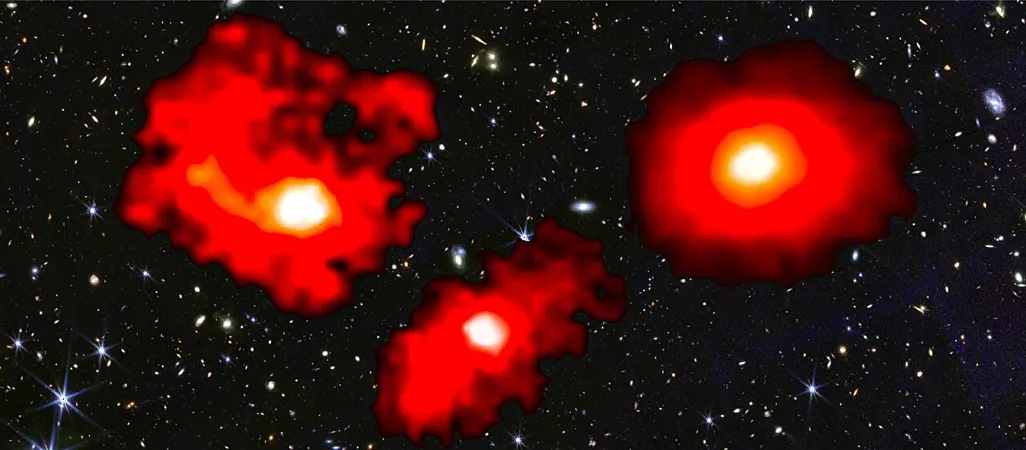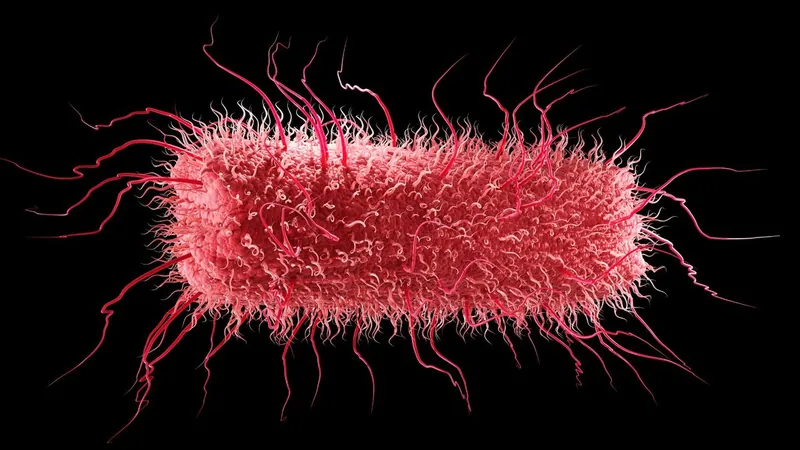
Shocking Discovery of 'Red Monsters': Ultra-Massive Galaxies Challenge the Foundations of Cosmology!
2024-11-13
Author: Arjun
Groundbreaking Discovery of Ultra-Massive Galaxies
In a groundbreaking revelation, an international research team spearheaded by the University of Geneva (UNIGE) has unveiled the existence of three ultra-massive galaxies—comparable in mass to our own Milky Way—already in existence within the universe's first billion years after the Big Bang. This astonishing find upends current theories of galaxy formation, suggesting that star formation in these early galaxies was far more productive than previously believed.
Utilization of the James Webb Space Telescope
Utilizing the incredible capabilities of the James Webb Space Telescope (JWST) through its FRESCO program, astronomers harnessed the power of the NIRCam/grism spectrograph to accurately assess distances and measure stellar masses of early galaxies. The published research in the esteemed journal *Nature* emphasizes a paradigm shift in our understanding of how galaxies were born.
Challenging Traditional Models
Traditionally, scientific models propose that galaxies develop gradually within colossal dark matter halos, where only about 20% of gas is typically converted into stars. However, the discovery of these 'red monsters' throws a wrench into this theory. These newly identified galaxies exhibit star formation rates nearly double that of lesser mass galaxies and those formed during later cosmic epochs due to their substantial dust content, which gives them a striking red appearance in JWST images.
Expert Insights
Dr. Mengyuan Xiao, the lead author of the study and a postdoctoral researcher in UNIGE's Department of Astronomy, states, “Our findings are reshaping our understanding of galaxy formation in the early universe. These extraordinary observations push the boundaries of our previous knowledge.”
Dust Coverage and Observability
The newly dubbed 'red monsters' were nearly invisible to earlier telescopes due to their extreme dust coverage, which is why their massive properties evaded detection until now. Dr. David Elbaz from CEA Paris-Saclay emphasizes this breakthrough, highlighting that past observations were hindered by dust attenuation.
Innovative Research Approach
The innovative approach of this international team involved establishing a comprehensive program with JWST to systematically analyze a broad sample of emission-line galaxies from the universe’s infancy. This meticulous method enabled unprecedented accurate distance estimates and stellar mass evaluations, painting a clearer picture of cosmic evolution.
The 'Too Many, Too Massive' Conundrum
Yet, the most intriguing aspect of this discovery revolves around the phenomenon of “too many, too massive” galaxies in the early universe—a conundrum that current models struggle to explain. Analysts are left with the promise of future insights as further observations with JWST and the Atacama Large Millimeter Array (ALMA) are anticipated to delve deeper into these ultra-massive red giants.
Profound Implications for Cosmic History
The implications for our understanding of cosmic history are profound. Dr. Xiao concludes, “These results indicate that our early universe was capable of producing stars with surprising efficiency. As we continue our studies of these galaxies, they will offer groundbreaking insights into the environment that molded the universe in its nascent phases. The red monsters are just the tip of the iceberg in our quest to explore and understand the beginnings of our cosmos.”
Conclusion and Future Exploration
With each revelation, we edge closer to unraveling the mysteries of the early universe. What secrets lie within the cosmos waiting to be uncovered by the next generation of space explorations? Stay tuned as we embark on this thrilling journey into the distant past!





 Brasil (PT)
Brasil (PT)
 Canada (EN)
Canada (EN)
 Chile (ES)
Chile (ES)
 España (ES)
España (ES)
 France (FR)
France (FR)
 Hong Kong (EN)
Hong Kong (EN)
 Italia (IT)
Italia (IT)
 日本 (JA)
日本 (JA)
 Magyarország (HU)
Magyarország (HU)
 Norge (NO)
Norge (NO)
 Polska (PL)
Polska (PL)
 Schweiz (DE)
Schweiz (DE)
 Singapore (EN)
Singapore (EN)
 Sverige (SV)
Sverige (SV)
 Suomi (FI)
Suomi (FI)
 Türkiye (TR)
Türkiye (TR)